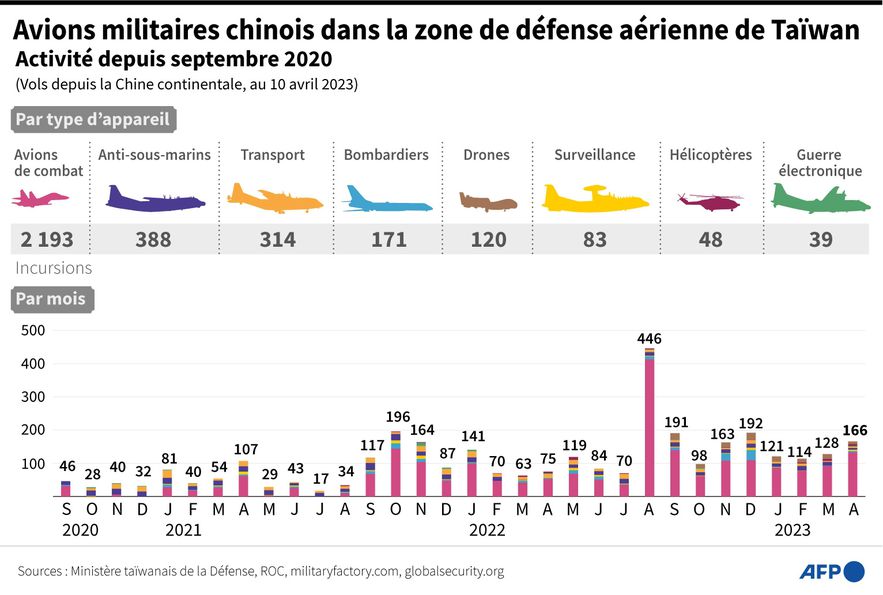New heatwave off the coast of Taiwan. According to the Taiwanese Ministry of Defense, between Sunday and Monday September 11, 26 Chinese military aircraft and 13 ships operated around the island.
Thirteen other planes have been detected since the early hours of Monday. The Chinese aircraft carrier Shandong was also detected on Monday about 60 nautical miles southeast of Taiwan’s southernmost tip, sailing east and entering the western Pacific, the ministry added.
Chinese incursions into Taiwan’s air defense zone
© / afp.com/Julia Han JANICKI
They crossed the invisible border that separates the island from the mainland
Taiwan said 22 of 39 recently detected planes crossed the midline of the Taiwan Strait, an invisible border that separates the island from the mainland. Crossings of the median line, considered more provocative, are generally less frequent than incursions into the ADIZ (a large area defined unilaterally by countries and in which they require foreign aircraft to identify themselves for reasons of national security ).
Taiwanese land missiles and oars ready to react
“The military is closely monitoring the situation and has tasked aircraft, Navy ships and land-based missile systems to respond,” Taiwan’s Defense Ministry said in a statement.
For its part, China justifies its aggressive deployment near the Taiwanese coast in response to the passage of two American and Canadian ships through the Taiwan Strait. Chinese soldiers remain “constantly on high alert”, a Chinese military spokesman said. The US Navy said it was an Arleigh Burke-class guided-missile destroyer, the USS Ralph Johnson, and HMCS Ottawa, and that the transit “demonstrates the commitment of the United States, its allies and their partners in favor of an + Indo-Pacific + free and open region”.

Chinese military aircraft in the Taiwan Air Defense Zone
© / afp.com/John SAEKI
Washington has recognized Beijing since 1979, but remains Taiwan’s strongest ally and supports the island’s right to decide its own future. The United States and its Western allies have stepped up so-called “freedom of navigation” passages by warships in both the Taiwan Strait and the South China Sea, to reinforce that both are international waterways, angering Beijing.
The weeks pass and the Chinese threat remains, inexorably. Barely a month ago, Beijing launched military maneuvers around Taiwan as a “severe warning”, after protesting against a stopover in the United States by the island’s vice-president, William Lai. While last June, tension had risen between an American destroyer and the Chinese navy.
